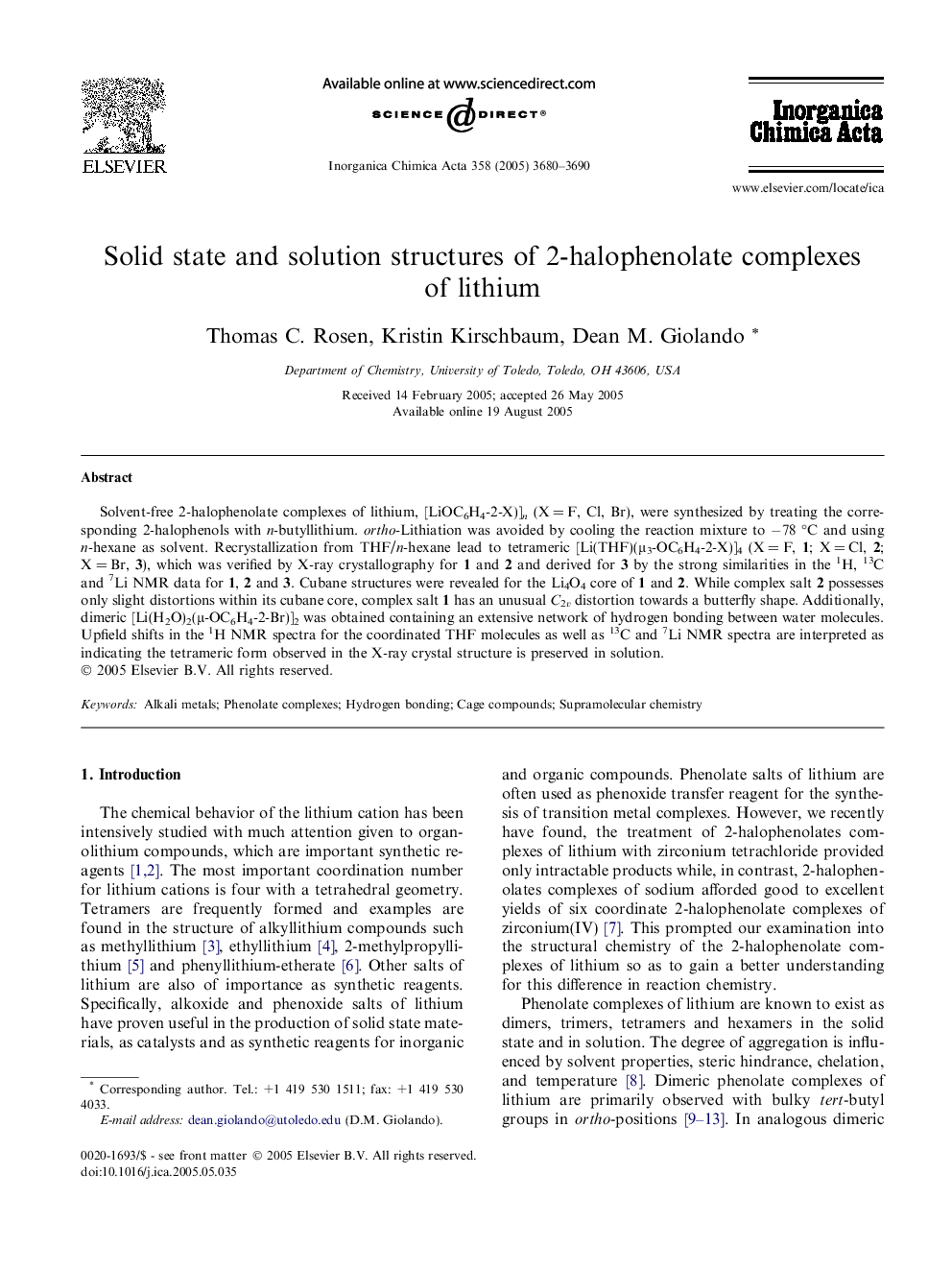| Article ID | Journal | Published Year | Pages | File Type |
|---|---|---|---|---|
| 1311814 | Inorganica Chimica Acta | 2005 | 11 Pages |
Solvent-free 2-halophenolate complexes of lithium, [LiOC6H4-2-X)]n (X = F, Cl, Br), were synthesized by treating the corresponding 2-halophenols with n-butyllithium. ortho-Lithiation was avoided by cooling the reaction mixture to −78 °C and using n-hexane as solvent. Recrystallization from THF/n-hexane lead to tetrameric [Li(THF)(μ3-OC6H4-2-X)]4 (X = F, 1; X = Cl, 2; X = Br, 3), which was verified by X-ray crystallography for 1 and 2 and derived for 3 by the strong similarities in the 1H, 13C and 7Li NMR data for 1, 2 and 3. Cubane structures were revealed for the Li4O4 core of 1 and 2. While complex salt 2 possesses only slight distortions within its cubane core, complex salt 1 has an unusual C2v distortion towards a butterfly shape. Additionally, dimeric [Li(H2O)2(μ-OC6H4-2-Br)]2 was obtained containing an extensive network of hydrogen bonding between water molecules. Upfield shifts in the 1H NMR spectra for the coordinated THF molecules as well as 13C and 7Li NMR spectra are interpreted as indicating the tetrameric form observed in the X-ray crystal structure is preserved in solution.
Graphical abstractTetrameric [Li(THF)(μ3-OC6H4-2-X)]4 (X = F, 1; X = Cl, 2; X = Br, 3) were prepared and verified by X-ray crystallography for 1 and 2 and derived for 3 by the strong similarities in the 1H, 13C and 7Li NMR data for 1, 2 and 3. Interpretation of NMR spectroscopy data suggests the tetrameric structure is maintained in solution. Additionally, dimeric [Li(H2O)2(μ-OC6H4-2-Br)]2 was obtained containing an extensive network of hydrogen bonding, which affords a supramolecular architecture of sheets consisting of an organic outer layer of 2-bromophenolates and an inorganic inner layer of (H2O)2Li2O2 units.Figure optionsDownload full-size imageDownload as PowerPoint slide
